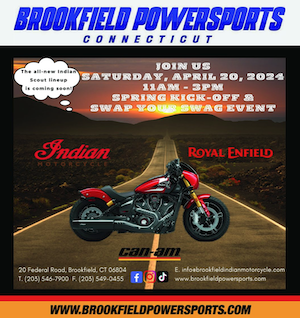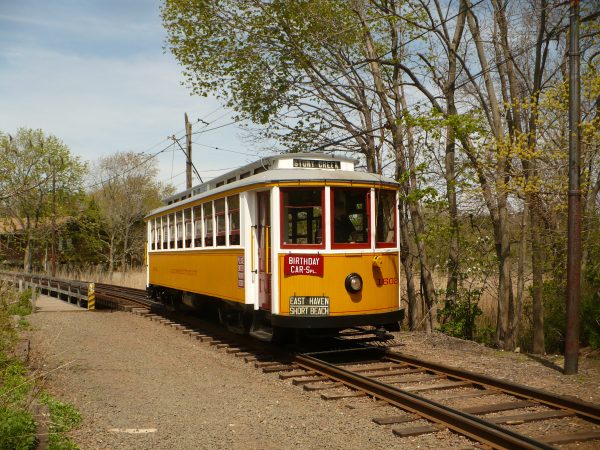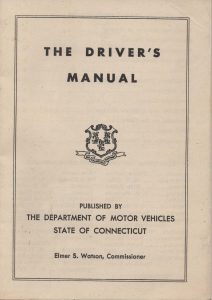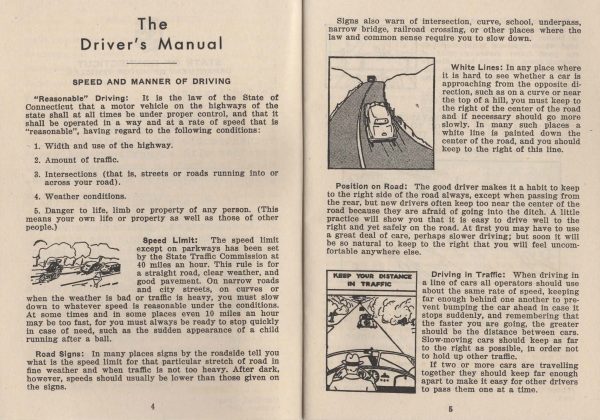
HARWINTON, CT – Interstate highways didn’t exist in October 1947. ABS wasn’t available on automobiles and motorcycles. Neither cars 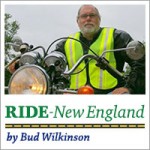 nor bikes were as safe or as sound nearly 70 years ago as they are today. There was less traffic, too, but possibly more risky behavior. And there was certainly a greater chance of dying in a crash in the days before seat belts, airbags and full-face helmets.
nor bikes were as safe or as sound nearly 70 years ago as they are today. There was less traffic, too, but possibly more risky behavior. And there was certainly a greater chance of dying in a crash in the days before seat belts, airbags and full-face helmets.
There was also a good deal more naïveté – as evidenced by “The Driver’s Manual” published by Connecticut’s Department of Motor Vehicles.
A friend found an unblemished copy and gave it to me this week to peruse. Parts of it are quaint and others obsolete. When was the last time a driver or rider was confronted by trolley cars. Yet on page seven there are instructions on how to drive in the vicinity of trolley cars:
“A motor vehicle must stop at least ten feet behind a trolley car which is stopping to take on or let off passengers, and must not go until all passengers are out of danger…”
I’ll be sure to remember that the next time I’m at the Shore Line Trolley Museum in East Haven or the Connecticut Trolley Museum in East Windsor, CT.
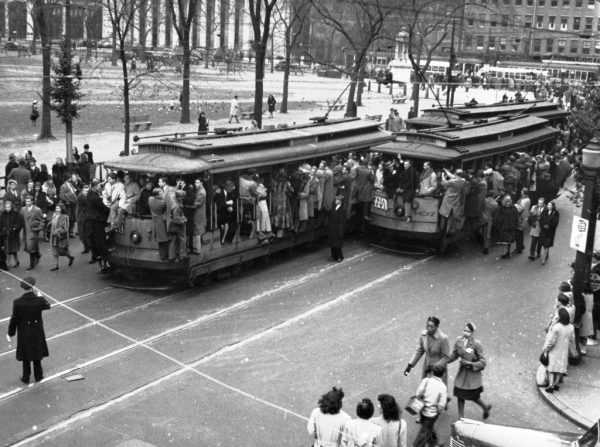
As would be expected, speed is discussed. “The speed limit except on parkways has been set by the State Traffic Commission at 40 miles an hour.” That’s no longer true as speed limits on state roads are now often 45 or 50 miles per hour.”
Worthy of a chuckle is an ensuing advisory which reads. “At some times and in some places even 10 miles an hour may be too fast…” Pardon me, but where?
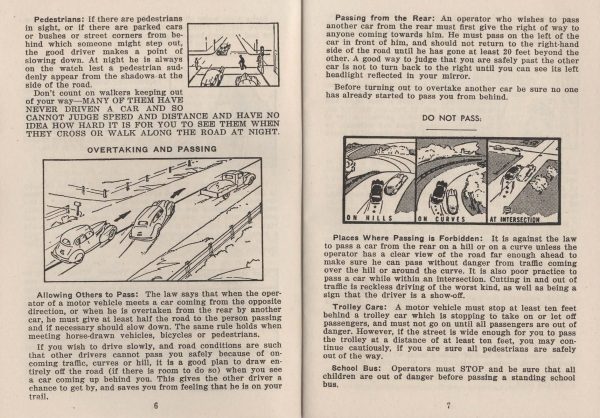
In reading the manual, a reader gets the sense that driving wasn’t as routine or as obvious as it is these days. “…It is also poor practice to pass a car within an intersection.” Really? I never would have known.
Perhaps not surprisingly, the manual provides the proper driver hand signals for turning – using one’s left arm out the window. “Left turn: Point with first finger, moving hand up and down, as if to show the way you want to go. Right turn: Make a circle with hand, fingers together, as if beckoning the following driver to pass.”
Some admonitions would be impossible to follow in the 21st Century. “Riding on the running board: No one except a repair man is allowed to ride on the running-board, hood or top of a car or truck.”
And, just to be safe, there is an additional advisory. “Baggage and Animals: Baggage or other loads carried on the left side of the car must not extend beyond the running board.”
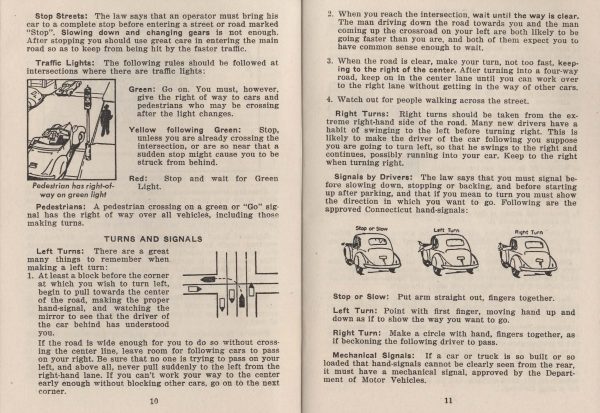
The 31-page manual also tells licensed drivers “you must sign your name and write your address in ink” on the license. Yes, licenses were made of paper and, 20 or so years later, and like so many other teens, I altered the birth date on mine so as to be able to buy alcohol. I may not have looked 21 years old, but my license stated that I was of legal drinking age.
The manual also contains some accident statistics for 1946. That year there were 2,637 accidents for driving “too fast for conditions,” 2,950 accidents for operating on the “wrong side of road, cutting in, passing on hills, etc.,” 2,520 accidents for “following too close,” and 2,088 accidents for “failure to yield.”
However, nowhere in the manual is the word “motorcycle” found. I’ve asked the D.M.V. if maybe there was a different manual for motorcyclists. My guess, though, is that there were just too few riders back then for the state to single us out.
I’m just glad that riders today don’t have deal with trolley tracks embedded in streets. Texting drivers are bad enough.
 Ride CT & Ride New England Serving New England, NYC and The Hudson Valley!
Ride CT & Ride New England Serving New England, NYC and The Hudson Valley!
